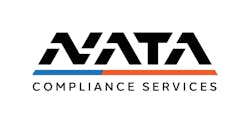The Difference Between Airport Badges and Crew Badges

Depending on the airport, a variety of identification badges may be found.
According to Tyler Bartoo, client success specialist at NATA Compliance Services (NATA CS), who hosted NATA CS’s recent Crew Badging: Best Practices and Benefits webinar, identification badges may be issued by a variety of sources. But guaranteeing the security of an airport is critical regardless of the ID.
When it comes to badges produced by airports, the most common airport badge is a SIDA badge.
A SIDA (or security identification display area) badge is typically issued to people, such as ground handling personnel, who work beyond the screening checkpoint in sterile areas who work on and around aircraft, among others.
“Not all airports do SIDA badging,” Bartoo notes. “But if you are at a SIDA airport, that’s probably not something you're going to get around. You're going to have to have that. That's going to be the rules of that particular airport.”
Whether an airport is using SIDA badges or something else, airport-issued identification is designed to meet the needs of that specific airport.
“An airport may not be a SIDA airport, but they may have some other kind of program in place that you'll have to comply with to be at their location,” Bartoo says. “However, these airport badges they may not qualify as crew badges.”
Crew badges serve a slightly different purpose, Bartoo notes. They may not work outside of the airport they're designed to work for. What’s more, requirements and rules are going to vary from one airport to another airport.
The Known Crewmember (KCM) program allows for crew badges, but Bartoo notes there is limited availability to that program.
“You must be operating under the employer’s 135 or 125 certificate. You must be actively operating under the employer’s either Twelve-Five Standard Security Program (TFSSP) or Private Charter Standard Security Program (PCSSP),” he explains. “So one of those two TSA security programs, as well as the personnel, must be an FAA-certified flight crew.
“Those are the basic components there you need in order to qualify for that.”
NATA Compliance Services has its own global identification system, called CrewID.
Aviation companies that are in good business standing that complete a vetting process are eligible for CrewID, Bartoo explains.
“You do have to be a company – an individual can't sign up to get badging with CrewID. We have to be able to vet the company,” he says, noting companies associated with advanced air mobility, vertiport and UAS/UAV would be eligible for CrewID badges.
“Part 91, corporate flight departments, a lot of folks in this space, a lot of times they would like to maybe try and do KCM, but unfortunately, they don't meet the earlier requirements we discussed. So they're looking for some way to issue secure badges to their employees. CrewID is a great way to do that.”
While Part 135 and Part 125 operators are potentially eligible for KCM, Bartoo says there are KCM-eligible companies that do both KCM and CrewID.
“How you choose to do that at your operation is up to you. But it goes beyond just those FAA-certified flight crew members,” Bartoo says, noting FBOs and repair stations, contract pilots and air medical personnel may also benefit from CrewID.
Alternatively, a company may print its own badges in-house or utilize a third-party to have ID badges produced. When using a third-party provider, Bartoo says there are key considerations that should be factored into that decision.
“What level of security do the badges offer?” Bartoo asks. “Whatever badging system you're looking at, make sure they’re checking all those boxes for you.
“If you're doing a vendor or service provider of some kind, there's probably other companies that are using them,” he continues. “So what kind of vetting is going into that? Is anybody looking into these companies?”
Bartoo also suggests reviewing the identifiable positions available on a badge.
“The identifiable positions help someone from a security standpoint,” he says, noting identifiable positions should align with industry standards. “What kind of positions do they have to choose from? Are they kind of just like making them up or are they more consistent?”
About the Author
Josh Smith
Editor
Josh Smith served as editor of Ground Support Worldwide as editor from 2016 through 2024. He oversaw production of the print magazine, created GSW's newsletters on a daily basis, and updated the latest news on AviationPros.com.
